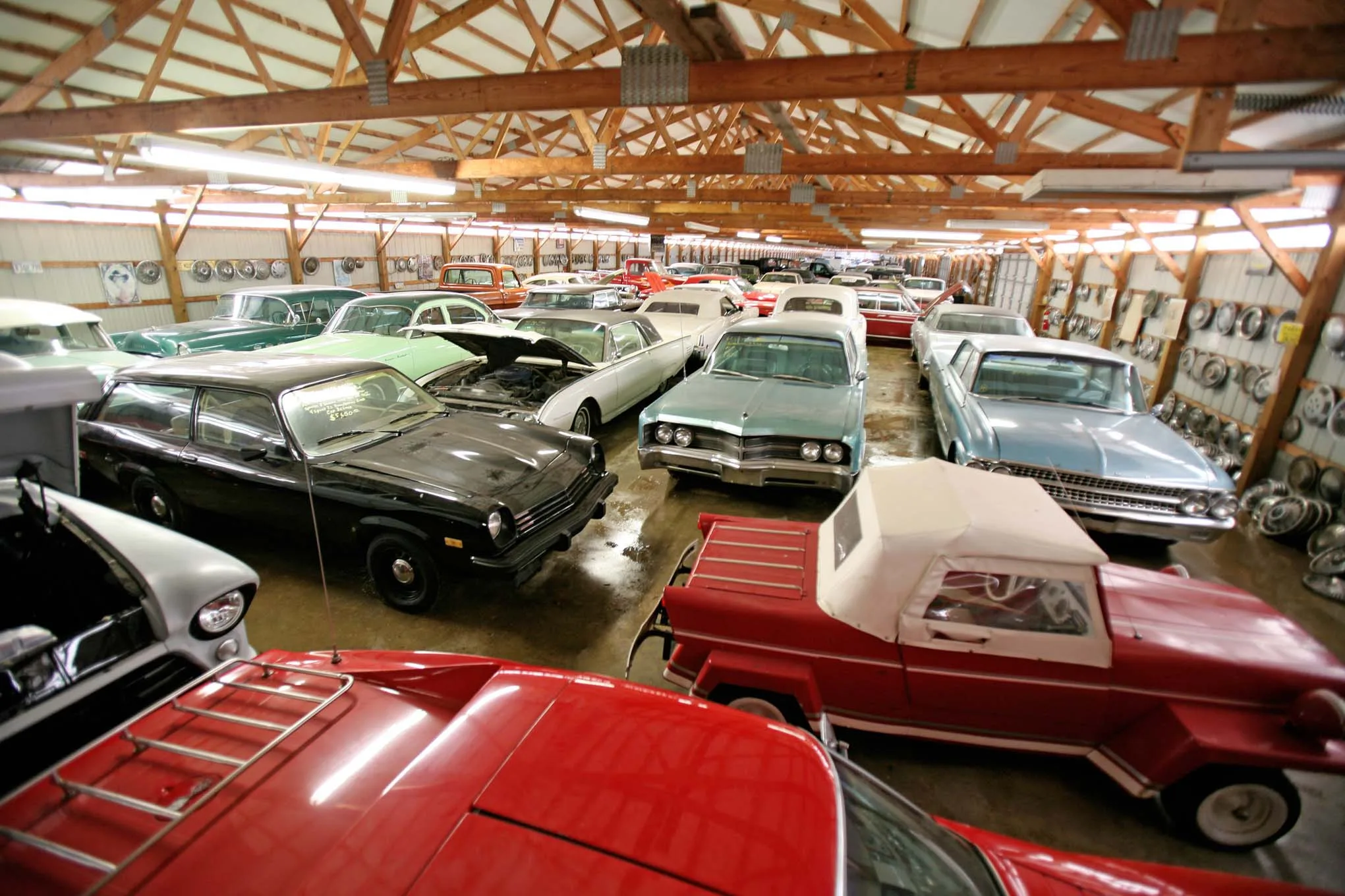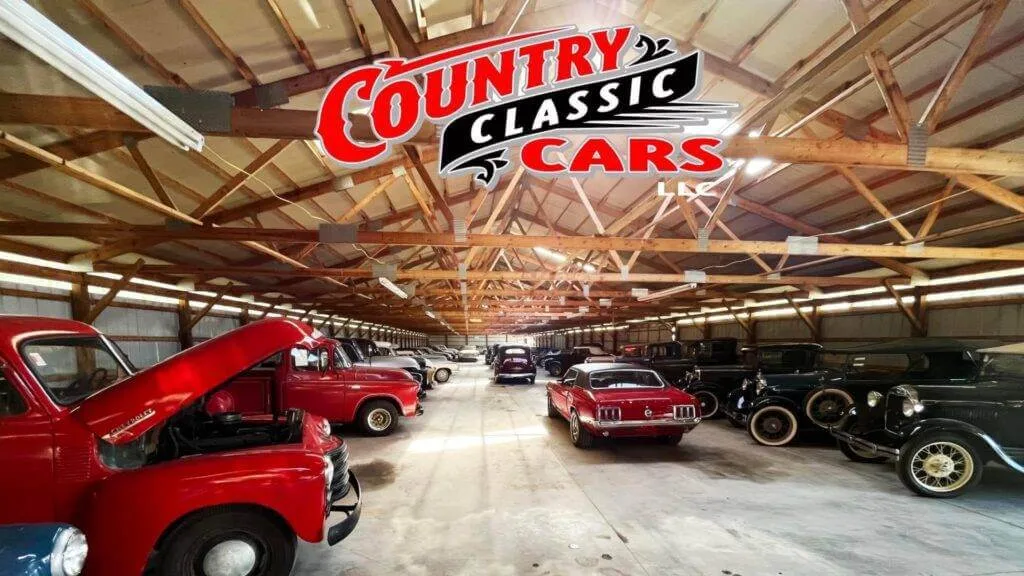Introduction: Cruising Down Memory Lane
Across the wide-open spaces of America’s countryside, the deep growl of a vintage V8 engine stirs the quiet morning air. A gleaming 1965 Mustang fastback cruises slowly past cornfields and rolling hills, its chrome catching the first light of day. In rural towns where time seems to pause, classic cars continue to live, breathe, and turn heads.
Welcome to the world of Country Classic Cars — not just a dealership in Staunton, Illinois, but a living, breathing culture found in barns, sheds, and fairgrounds throughout rural America. Here, classic vehicles are more than old steel; they’re family heirlooms, artistic expressions, historical relics, and most of all, symbols of American freedom and ingenuity.
This article is a tribute to that enduring legacy — exploring the origins, restoration, lifestyle, and community that define classic cars in the American countryside.
1. The Legacy of American Classic Cars

The golden age of American automotive design — roughly from the 1930s through the 1970s — produced vehicles that didn’t just get you from place to place; they transported you in style. Long before the age of hybrids and self-driving features, cars were raw, expressive, mechanical marvels. Tailfins soared, engines thundered, and interiors felt like lounges on wheels.
In rural America, these cars became part of the landscape. Fords, Chevys, Dodges, and Pontiacs served both as daily drivers and weekend dreams. People modified them, raced them, fixed them up, and passed them down. Today, country classic cars reflect an entire era of craftsmanship and individuality that’s still cherished across farms, small towns, and rural highways.
2. Country Classic Cars of Staunton: A Landmark Destination
Founded in the 1990s, Country Classic Cars in Staunton, Illinois, has become a mecca for car lovers. Located just off historic Route 66, this sprawling dealership and museum showcases hundreds of classic vehicles under massive storage barns, ranging from 1920s Fords to 1980s Cadillacs. The idea started with a few restorations and exploded into a nationwide attraction for buyers, sellers, collectors, and road-tripping families.
With gravel lots, vintage signage, and barn-style architecture, Country Classic Cars blends commerce with nostalgia. They don’t just sell cars; they preserve stories — each hood ornament, each worn steering wheel, telling a chapter of American life.
3. The “Barn Find” Fantasy
In the country, the phrase “barn find” is no myth — it’s a very real part of the classic car world. All across rural America, vintage cars sit hidden away under dusty tarps, stored in sheds or barns for decades. Sometimes they’re forgotten; other times they’re just waiting for “someday.”
These vehicles often surface through local word of mouth — an old pickup that belonged to Grandpa, or a muscle car parked since high school. Finding one is like uncovering buried treasure. The body may be rough, the engine seized, but the bones are often solid. For many enthusiasts, rescuing a barn find and bringing it back to life is the ultimate reward.
4. Restoration: Patience, Skill, and Passion
Restoring a classic car in the country isn’t just a weekend hobby — it’s a serious commitment. It requires:
- Time – Projects can take years to complete.
- Money – Parts can be expensive or hard to find.
- Skill – Everything from welding to upholstery.
- Community – Friends, family, or local mechanics often lend a hand.
Rural garages and home workshops become laboratories of art and engineering. Whether it’s a frame-off restoration or a rat-rod build with patina intact, the journey is as important as the result.
For many, the goal isn’t to win awards but to honor a car’s legacy — to give it back its voice, one polished fender and rebuilt carburetor at a time.
5. Country Car Shows: Where Legends Gather
From Texas to Tennessee, rural America lights up every summer with classic car shows and “cruise-ins.” These aren’t flashy Hollywood affairs; they’re homegrown celebrations of grit, grease, and great design.
Main Street gets blocked off. Town squares fill with folding chairs and BBQ smokers. Kids stare at old trucks. Veterans gather around the old military Jeeps. Judges walk slowly past polished hoods, but most people are there for the camaraderie.
Events like the Back to the 50s Weekend in Minnesota or Cruisin’ the Coast in Mississippi draw thousands, but even the smallest towns host events that make classic car ownership feel like a club, a family, and a rolling museum all in one.
6. The Emotional Connection: More Than Metal
Ask any classic car owner about their ride, and you’ll hear more than specs and price. You’ll hear about the first time they saw it, the person who owned it before, or the reason they chose that exact make and model.
For some, it’s reliving a high school memory. For others, it’s a tribute to a parent or spouse. Many rural families pass down cars as heirlooms. Owning one becomes a way of preserving family history — of keeping loved ones close through the rumble of an engine.
7. The Economics of the Country Classic Car
Classic cars can also be a smart investment. While the market fluctuates, certain models — like the 1967 Mustang or 1957 Chevy Bel Air — have proven to hold and increase their value over time. Country Classic Cars and other rural dealerships have built strong reputations by:
- Offering affordable restorations
- Sourcing authentic vehicles
- Selling worldwide through online platforms
Additionally, rural areas offer better storage (low humidity, barn space), which helps preserve condition, a key reason classic car businesses thrive in the countryside.
8. Tips for Buying Your First Country Classic
Thinking of buying your first classic? Here are some starter tips:
- Start simple: A 1960s Ford or Chevy pickup is reliable and easy to find parts for.
- Inspect carefully: Check for rust in the frame, floorboards, and underbody.
- Ask for documentation: Service records, original manuals, and ownership history add value.
- Consider your goals: Are you driving it daily, showing it off, or building a project?
Many rural buyers also enjoy trading among friends — it’s not uncommon to swap a ’65 Buick for a ’72 Bronco just because the seasons have changed.
9. Maintenance and Driving in the Country
Classic cars were built to be driven — and the countryside is the perfect place to do just that. With wide open roads, minimal traffic, and stunning scenery, owning a classic out here isn’t a burden — it’s a joy.
Still, there’s maintenance involved:
- Use ethanol-free gas when possible
- Store vehicles indoors or under cover
- Regularly run the engine, even in winter months.
- Invest in classic car insurance (agreed value policies)
The payoff? A Sunday drive that feels like stepping into a time machine.
10. Challenges and the Future of the Hobby
As with any passion, classic car culture faces challenges:
- Environmental regulations may limit older engines in some states
- Younger generations are more interested in electric vehicles.
- Parts shortages affect rare and foreign makes.
However, the future is not bleak. A growing community of “restomodding” enthusiasts blends classic style with modern engines, brakes, and tech. Others are pioneering electric classic car conversions, giving vintage rides a second life with silent power.
Online communities, YouTube mechanics, and classic car TikTok accounts are also attracting new, younger fans. The soul of classic cars — their individuality and charm — still resonates, even in the digital age.
Conclusion: The Road Ahead
Country classic cars represent more than nostalgia — they embody the spirit of American independence, creativity, and resilience. Whether found in barns, bought from rural dealerships like Country Classic Cars in Staunton, or rebuilt in backyard garages, these vehicles continue to inspire awe and pride.
In an era of rapid change, where technology replaces everything overnight, classic cars remind us that some things are worth preserving — not because they’re practical, but because they’re beautiful. Because they connect us to who we were, and who we still want to be.
So, the next time you’re on a country road and hear that familiar low growl of an old V8, give a wave. You’re not just seeing a car — you’re witnessing history, rolling by in style.


